[EN/BG] REFLECTING THE ARRIVAL OF A NEW CHILD / KAK ОТРАЗЯВАМЕ НА ПОЯВАТА НА НОВО ДЕТЕ

I would like to thank the organizers of the Hive Cross Culture race for the amazing theme they have set this month.
It's a true happiness when new life comes into the family not only in my community but in every community. Every country or even ethnicity has its own peculiarity and differences that enrich our culture.
As everywhere in the world, so in Bulgaria we have traditions and customs that accompany the birth of a new life. Some of them are directed to the mother some to the baby itself. I will be happy to share some of them with you.
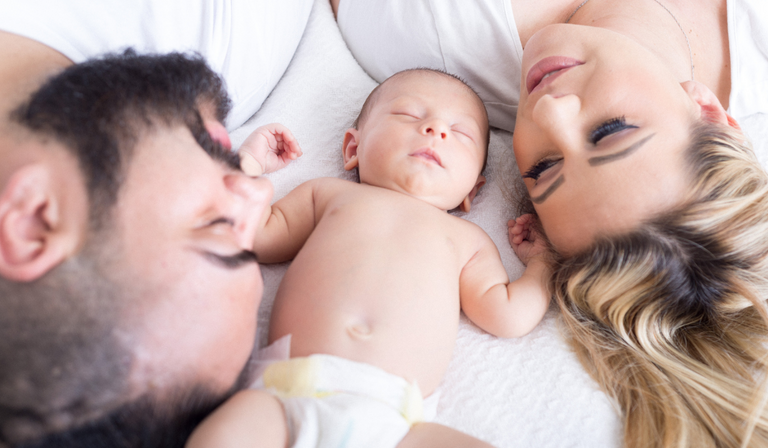
There are no one or two rituals that our ancestors did when a baby came into the family.
Starting at birth
The Virgin Mary is considered the patroness of the family and mothers, so after a successful childbirth, a small ritual cake was prepared which was smeared with honey and distributed to those closest to the baby for health. It was called "Mother of God's cake" or "Grandmother's cake". It was made as a brodary to the heavens for the smooth arrival of the little one.
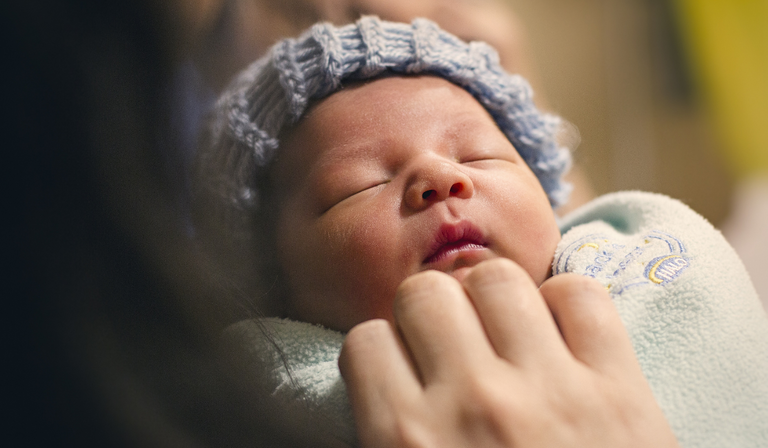
I have explained why it was called "The Virgin's Pie" now comes the time to explain why "Grandma's Pie". In many families, the mother-in-law, or to put it another way, the father's mother was the main helper of the mother in the process of giving birth to the baby. She was the first to take charge of the child and bathe it while the mother had a moment of rest after the tiring process. She cared for the little baby and for the mother during the first hours of the baby's life. Not all women were able to confidently help with the birth of their grandchild or were able to perform this ritual which is why midwife grandmothers came into being.
The young mother had to listen to the mother-in-law and strictly carry out every instruction given by her to ensure the baby's survival.

In our country to thank all the women who have helped other such women to give birth without any problem we celebrate such a holiday - Grandmothers Day - today known more as midwives day. On this day, women who gave birth in the calendar year were supposed to bring gifts to the "midwife grandmother", watered her hands with water, handed a towel to be wiped, sweet things were given and a towel was a must. Nowadays the tradition has changed a bit and in most cases the mothers bring the gifts to the Midwives, for example I brought a towel, and a few beauty products to the doctor who delivered me. I wanted to remind her what an amazing person she is and how she has helped so many women become mothers!
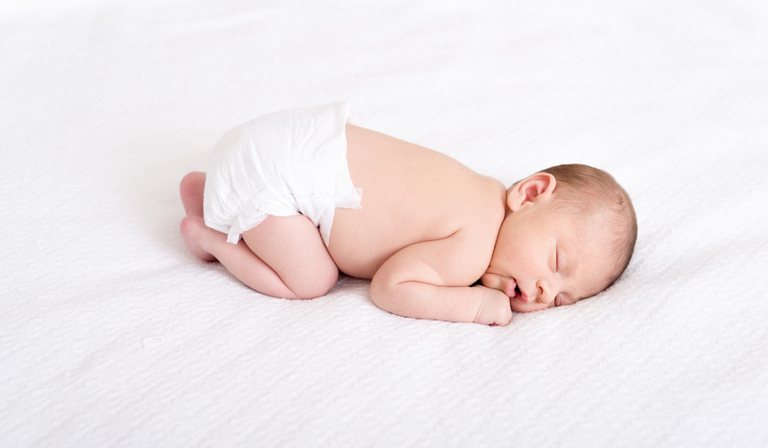
Here are a few outdated customs that may probably be performed somewhere in Bulgaria, but I only know about some of them from various forums and social networks.
- When the child was born it was supposed to smear his face with soot from the hearth, so that his pure soul could be hidden from the "demons" and they could not possess him. It was also done for tutors and "evil eyes". A cap was put on the baby as it had to have a blue manisto on it and a red thread was tied on his left hand.
Honestly for my son we only executed the red thread. In the first few weeks he cried a lot - normally he was suffering from colic and his whole world turned itself upside down, so now he had to eat and breathe on his own and not with my help.
On the day before discharge the mother or the boy's mother, i.e. the grandmother should go to a church and ask for holy water. It is good to notify the priest that the water is for the infant. He will read the so-called Grandmother's Prayer over the water, and give a candle.
On the day of the discharge, before the mother and baby enter the house, the midwife sprinkles - bedroom, cot, kitchen, bathroom, everywhere of the holy water and lights the candle given in the church. Then the mother and baby can enter. The candle must be left to burn out to the end. With the remaining holy water, a few drops are dropped into the baby's bathing water daily, until the 40th day. If taken out, seen by strangers and there is fear of lessons it is well to wash the baby's eyes afterwards again with holy water.
** Usually on the day of discharge the grandmothers knead a grazcha. It must be sweet, also brought to the church the day before.** This grazka must be eaten all at home, by those present, without giving it away, so that all the luck stays with the child. According to an old Bulgarian custom it is served with honey and colorful salt, so that the life of the little one will be sweet and colorful.
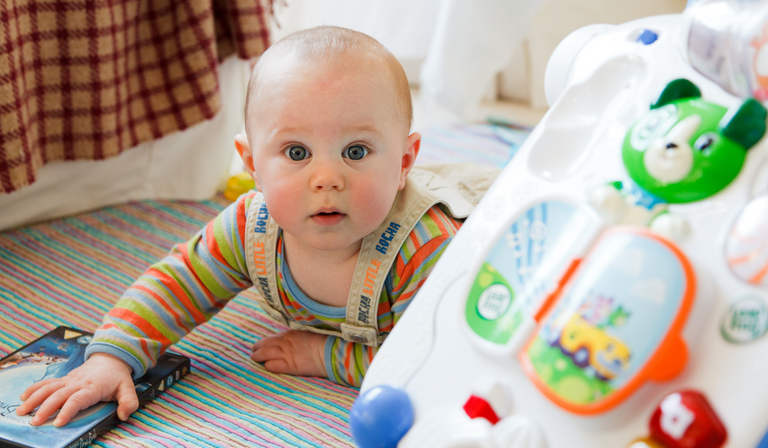
In the first few days of a child's life, outsiders should not come into the home. It was believed that they could bring magic, startle the mother and cause her breast milk to dry up or somehow make the baby sick.
** Many things were forbidden to the lechusa.** One of them was to eat with the rest of the family. She had to eat alone and after everyone else.
She was forbidden to send people out of the house, even to leave the house at all.
She wasn't supposed to knead bread, draw water from the well, or touch an axe (I'm not sure if we're talking about any kind of blade here). she also couldn't go to work in the fields because "she was dirty" after all, a woman cleans herself for nearly a month after giving birth of various "impurities" left over from pregnancy. Interestingly, she was thus actually forbidden to do hard physical labor, and thus recover her strength.
Baptism of infants was very important. It was important that it be performed as soon as possible after birth, because if a person was not baptized he could not be married before god or be impregnated if he died. This is why they rushed premature, sick or crippled babies to be baptized in the first days of their lives so that if they accidentally died they could be buried according to Christian canons.
Nowadays many parents postpone the baptism of their children. Such is the situation with my son. Not because we don't want him to be baptized but because of the pandemic situation with COVID. He was born shortly before the disease spread in my country, and we decided to postpone this for a while.
- According to tradition, in the first 40 days of a child's life, he should not be taken out of the home. Come to think of it, his baptism was probably done at home so that the child could be presented before God. On the day the child turned 40 days old, a prayer was read to the child in church. Often it was called a "pure prayer." With this prayer, the mother's prohibitions were lifted, that is, she could now eat with the rest of the family and the others mentioned above.
The child had to be taken to 4 houses, and there the parents had to be alive (the grandparents) and give the child sugar and an egg.
After the prayers were finished on the same day, the first gathering in honour of the child, the Pogachata, was made. It was to be prepared by a woman with two living parents.
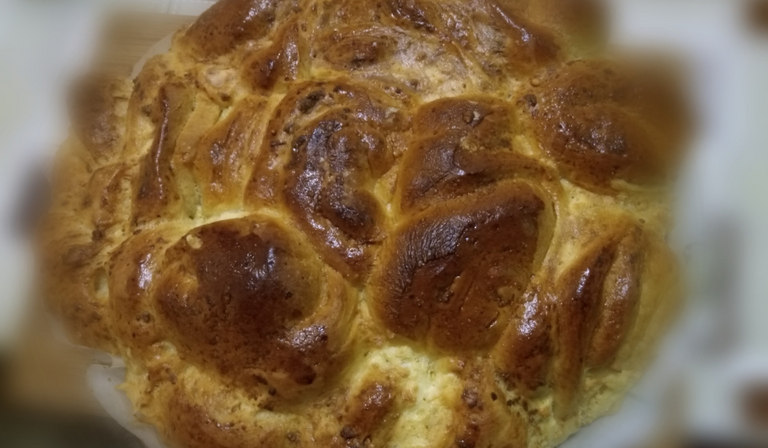
I have explained why it was called "The Virgin's Pie" now comes the time to explain why "Grandma's Pie". In many families, the mother-in-law, or to put it another way, the father's mother was the main helper of the mother in the process of giving birth to the baby. She was the first to take charge of the child and bathe it while the mother had a moment of rest after the tiring process. She cared for the little baby and for the mother during the first hours of the baby's life. Not all women were able to confidently help with the birth of their grandchild or were able to perform this ritual which is why midwife grandmothers came into being.
Pogacha is a ritual sweet bread which is made in honor of the baby. The ritual associated with it is mainly tied to women and children. the gathering should be attended by children and women who are not in the cycle. If any of the invited women were in such a period of the month, she had to say it out loud to everyone and apologize to the baby for coming as such.
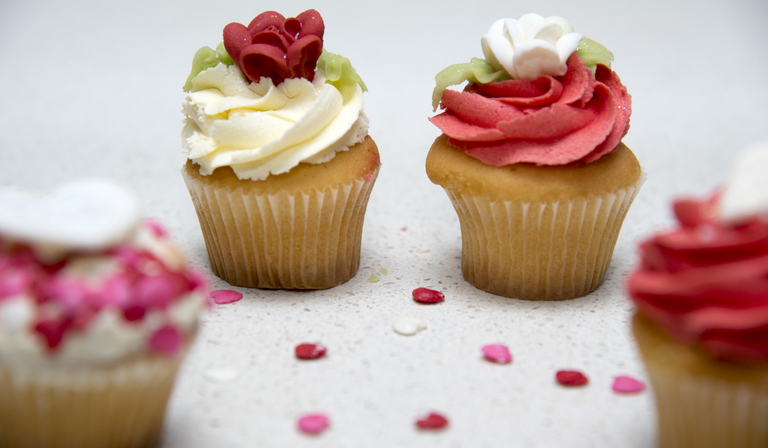
Sweet things and gifts were brought for the child.
The climax of the ritual was: the mother sat on a chair with the child in her arms as 2 women held a white cloth above her, two other women had to break the ritual bread calling the child to be smart, hardworking, caring and any other boons that could be uttered. A bite of the cake smeared with honey was handed to the mother and child (they probably only touched their lips). Pieces of the cake were distributed to all present.

In another white cloth a symbolic amount of money in coins was left with which the baby could "buy sleep" i.e. sleep peacefully at night and not cry.
The mother had to tie this cloth with the coins together with a piece of cake and leave it somewhere high for the child to achieve great and high success. Depending on how tightly the mother tied this cloth, it was judged whether the child would become a miser or would spend his money too much.
It was important that those women who performed the ritual of holding the cloth and breaking the cake had living parents.
Another interesting thing is that on this day nothing was to be taken out of the house lest the child become a thief or stop the mother's breast milk.
The main thing about this ritual is that everybody gets to know the child and wishes him good things like health, luck and long life!
By the 40th day, the mother and child were believed to be in a state between life and death, somewhere between the chaotic and the disordered. In the past, the mother-in-law used to take mother and baby to this "Pure Prayer".
Something that shocked me was that in the past on this 40th day at the "Pogacha" ritual, the child had to be covered by all the women present at the event, and they had to spit in the baby's mouth.
I find a bit of a discrepancy in different regions, some say that the taz "Pogacha" should be done before the child's 40th day because the 40th day had carried the idea of 40 days of a dead person. Others say it should be done right on the 40th day others recommend after the 40th day. So here one can see a wide variety of the same ritual.
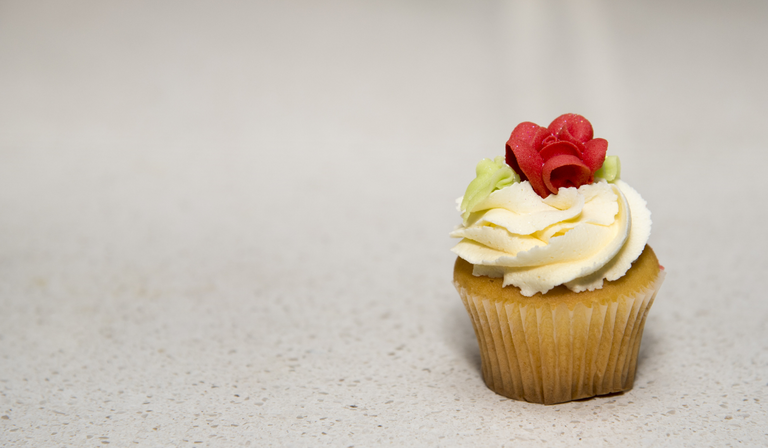
Another ritual tied to the arrival of a baby in the home is the Fortune Teller.
This is a ritual associated with a child's first steps. It is done when the child is walking steadily, because there are things that the child himself must accomplish.
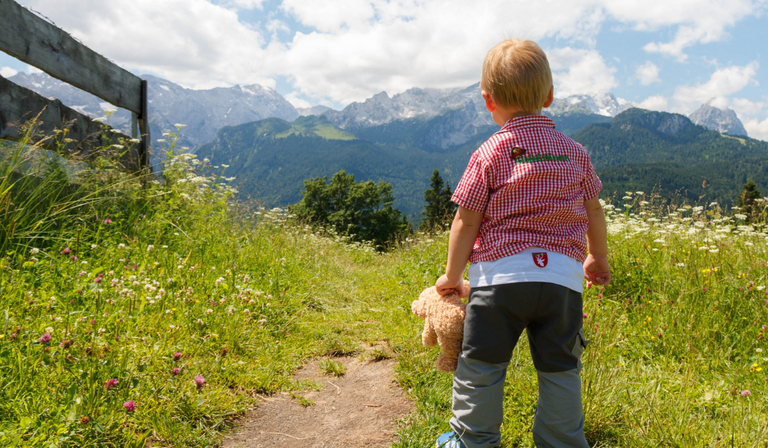
When the child has taken his first steady step the custom says that the mother should knead a cake. Then running she should go to a commie. She sets off running as she must not trip - so that the child is not tripped, she must not stop bouncing until she enters the commie's home. There the cake is broken and they have a snack. No part of the cake should be returned to the home of the child who has already walked.
What I did for this cake to my son. I arranged with the downstairs neighbor. she agreed to have the cake donated to her. we agreed on a convenient day and time. I texted her that I was leaving... I walked lightly down the hall and stairs and she was waiting for me on the stairs. The cake couldn't be given in front of the door, meaning it had to be inside the house, so we both ran another 5-6 meters to her door. I went for a while, and ended up drinking coffee and eating cake, and the little one was with his father upstairs.
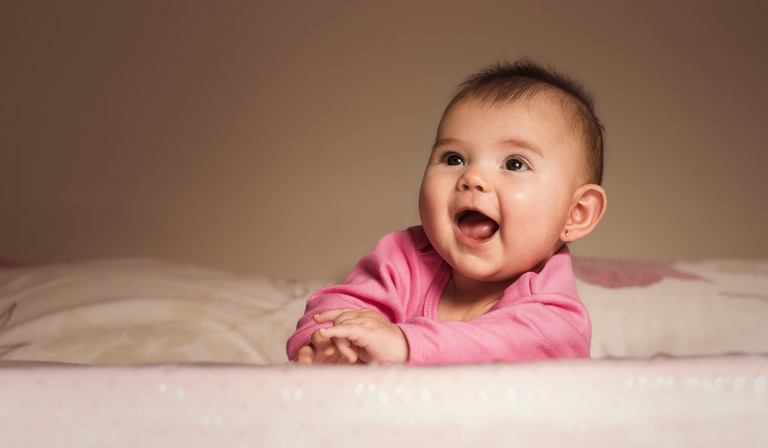
The ritual continues...
When the child is now walking steadily a reunion is made (in most cases with those closest to him) a cake is made again which is kneaded by the mother or another relative (woman) with living parents. There are two options here, one is when the cake has risen before being put to bake the child must step in it and his foot make an imprint, the other option is to cut a piece of dough in the shape of a child's foot.
Prepare objects to be burped so that the child can choose his future profession. These objects can be any number of things for example:
wallet - for a banker
A ladle - for a cook
Hammer - for a builder
A screwdriver or similar object - for an electrician
A paintbrush - for a painter
A book - for a teacher
And what not. It is important that each object is explained to all present what profession it is for. Another important thing is that the child has not seen it (does not recognize the object).

When all the guests are assembled, a white cloth/towel or some other white cloth at least 2 metres long is placed on the ground with the items arranged in a circle at the far end.
The child sticks to the 'empty' end of the cloth as the cake is rolled in front of him. When she reaches the objects the idiot has followed her the first object the child takes it will be his occupation. The cake is then broken and the first piece is presented to the child with some honey.
What happened to my son:
We prepared everything described, rolled the cake and it turned out that our little man was not interested in the objects at all. He was fed and just chasing his cake. My mother (his grandmother) took the cake off the canvas, but he took off chasing after her screaming (probably "Grandma why are you taking that yummy stuff from me"). We had to persuade him to choose one of the pre-pies. The interesting thing about him was that he grabbed two objects at the same time - a pastry spatula and a book, now we expect him to become some Master Chef and write a book or have his own cooking school.
After the ritual all the guests gather at the table. For us, the ritual coincided with his first birthday.
According to Christianity, the ritual should be done on certain days (Monday, Wednesday or Sunday).
I hope these Bulgarian customs related to the appearance of a child in the family have been interesting to you.

Искам да благодаря на организаторите на състезанието на Hive Cross Culture за невероятната тема която са поставили този месец.
Истинско щастие е когато се появи нов живот в семейството не само в моята общност но и във всяка такaва. Всяка държава или дори етнос има своята особеност и различия които обогатяват културата ни.
Както навсякъде по света така и в България имаме традиции и обичаи които съпътстват появата на нов живот. Някои от тях са насочени към родилката някои към самото бебе. Ще се радвам да споделя с вас част оттях.

Няма един или два ритуала които са се правили нашите деди когато се е появявало бебе в семейството.
Да започнем от раждането
Богородица се приема за покровителка на семейството и родилките затова и след като се е усъществявало успешно раждане на дете се е приготвяла малка обредна питка която се е намазвала с мед и се е раздавала на най-близките за здраве на бебето. Наричана е "Богородична пита" или "Бабина пита". Била е правена като брадарност към небесата за безпроблемно протеклото появяване на малкия човек.

Обясних защо се е наричала "Богородична пита" сега идва момента да обясня и защо "Бабина пита". В много семейства свекървата или казано по друг начин майката на бащата е била основният помощник на родилката в процеса на раждане на бебето. Тя първа е поемала детето и го е къпела докато майката е имала момент на почивка след изморителният процес. Тя се е грижела за малкото бебе и за родилката през първите часове на живота на бебето. Не всички жени са успявали уверени да помагат с раждането на тяхното внуче или са се можели да изпълнят този обред затова и са се появили бабите-акушерки.
Младата майка е трябвало да слуша на свекървата и стриктно да изпълнява всяко указание дадено от нея, за да се осигуря оцеляването на бебето.

В нашата страна за да се отблагодарим на всички жени помогнали на други такива да родят безпроблемно честваме такъв празник - Бабин Ден - днес известен повече като деня на акушерките. На този ден жените родили в календарната година трябвало да занесат дарове на "бабата-акушерка", поливат и ръцете с вода, подават и кърпа да се избърше, даряват се сладки неща и задължително кърпа. В днешно време традицията е малко променена и в повечето случаи майките носят подаръците на Акушерките, например аз занесох кърпа, и няколко продукта за разкрасяване на докторката която ме изроди. Исках да и напомня колко невероятен човек е и как е помогнала на много жени да станат майки!

Ето няколко остарели обичая които вероятно може и да се изпълняват някъде в България, но аз знам за някои от тях само от различни форуми и социални мрежи.
- Когато се роди детето е трявало да се нацапа лицето му със сажди от огнището, за да може да се скрие от "демоните" чистата му душа и да не могат да го обладаят. Правело се е още протов уроки и "лоши очи". Слагала се шапчица на бебето като на нея трябвало да има синьо манисто, а на лявата му ръка се е заързвал червен конец.
Честно казано за моя син изпълнихме само червения конец. В първите няколко седмици много плачеше - нормално мъчиха го колики и целият му свят себе преобърнал, та сега той сам трябваше да яде и да диша а не с моя помощ.
В деня преди изписването майката на майката или на момчето, т.е. бабата следва да отиде в черква и да помоли за светена вода. Добре е да извести свещеника, че водата е за навородено. Той ще прочете т.н. Бабина молитва над водата, ще даде и свещ.
В деня за изписването, преди майката и бебето да влязат в къщата бабата поръсва - спалнята, бебешко креватче, кухня, баня, навсякъде от светената вода и запалва свещичката, дадена в черквата. След това майката и бебето могат да влязат. Свещта трябва да се остави да догори до край. С останалата светена вода се капва по няколко капки във водата за къпане на бебето ежедневно, до 40-тия ден. Ако се извежда навън, виждат го чужди хора и има страх от уроки е добре очичките на бебето да се измият след това отново със светена вода.
Обикновено в деня на изписването бабите замесват и погача. Тя трябва да е сладка, също да е внесена в черквата предния ден. Тази погача трябва да се изяде цялата у дома, от присъстващите, без да се раздава, за да остане целия късмет с детето. По стар български обичай поднася се с мед и шарена сол, за да е сладък и шарен живота на малкото.

В първите няколко дни от живота на детето не трябва да идват в дома външни хора. Смятало се е че те могат да донесат магии, да стреснат майката и да и пресъхне кърмата или по някакъв начин да разболеят бебето.
На лехусата се забранявали много неща. Едно от тях било да се храни с останалите хора на семейството. Тя трябвало да се храни сама и след всички останали.
Забранявало се е да изпраща хора които излизат от дома, даже да излиза от дома изобщо.
Тя не трябвало да меси хляб, да вади вода от кладенеца или да докосва брадва (не съм сигурна дали тук не става дума за всякакво острие). тя не можела и да ходи да работи на полето защото "била мръсна" все пак жената се чисти близо месец след раждането от различни "нечистотии" останали от бременността. Интересното е, че по този начин на нея реално се забранява да извършва тежък физически труд, и така да възстанови силите си.
Кръщаването на бебетата е било много важно. Важно е било то да се извърши максимално бързо след раждането, защото ако човек не е покръстен той не може да се венчае пред бога или да бъде опят ако почине. Затова и са бързали недоносени, болни или сакати дечица да бъдат кръстени в първите дни на живота им, за да може ако случайно починат да могат да бъдат погребани по християнските канони.
В днешно време много родители отлагат във времето кръщаването на децата им. Такава е и ситуацията с моя син. Не защото не искаме да бъде кръстен а заради пандемичната обстановка с COVID. Той се роди малко преди разрастването на заболелите в моята страна, и решихме да отложим това за малко.
- Според традицията в първите 40 дни от живота на детето то не трябва да се извежда навън от дома. Като се замисля вероятно кръщенето му се е извършвало в домашни условия за да може детето да бъде представяно пред Бога. В деня в който се навършват 40 дни от раждането на детето се ходело в църква за му се прочете молитва. Често тя е наричана "чиста молитва". С тази молитва и се смъквали забраните на майката, тоест вече тя е можела да се храни с останалите членове на семейството и другите споменати по горе.
Детето трябвало да се заведе в 4 къщи, като там трябвало родителите да бъдат живи (бабите и дядовците) и да дарят детето със захар и яйце.
След приключване на молитвата в същия ден се правело първото събиране в чест на детето - Погачата. Тя трябвало да бъде приготвена от жена с двама живи родители.

Погачата е обреден сладък хляб които се прави в чест на бебето. Ритуалът свързан с нея е обвързан основно с жени и деца. на събирането трябвало да присъстват деца и жени които не са в цикъл. Ако някоя от поканените жени била в такъв преиод от месеца тя трябвало да го каже гласно на всички и да се извини на бебето че е дошла такава.

Носели са се сладки неща и дарове за детето.
Кулминацията на ритуала е: майката е сядала на стол с детето в ръце като над нея 2 жени са държали бял плат, други две жени е трябвало да разчупват обредния хляб като наричат детето да бъде умно, работливо, грижовно и всякакви други благодетели които може да се изрекат. Подавал се залък от питката намазан с мед на майката и на детето (вероятно само са докосвали устните му). Парчетата от питката се раздават на всички присъстващи.

В друга бяла кърпа се оставяли символична сума пари в монети с която бебето да си "купи сън" тоест да спи спокойно вечер и да не плаче.
Майката трябвало да завърже тази кърпа с монетите заедно с парче от питката и да се остави някъде на високо за да може детето да постигне големи и високи успехи. В зависимост колко силно е завързала майката тази кърпа се съдело дали детето ще стане скъперник или ще харчи по много парите си.
Важно било тези жени които изпълняват ритуала - държането на кърпата и разчупването на питката да бъдат с живи родители.
Друго интересно нещо е че на този ден нищо не трябвало да се изнася от къщата за да не станело детето крадец или да спре кърмата на майката.
Основното при този ритуал е че всички се запознават с детето и му пожелават хубави неща като здраве, късмет и дълъг живот!
Смятало се че до 40-тия ден майката и детето се намират в състояние между живота и смъртта, някъде между хаотичното и неподреденото. В миналото свекървата е водила майката и бебето на тази "Чиста молитва".
Нещо което ме шокира беше че в миналото на този 40-ти ден при ритуала "Погача" детето е трябвало да бъде закърмено от всички жени присъстващи на събитието, а те е трябвало да плюят в устата на бебето.
Намирам малко разминаване в различните региони, някои твърдят че таз "Погача" трябва да се направи преди 40-тия ден на детето, защото 40-тия ден бил носел в себе си идеята за 40-дни на покойник. Други казват че трябва да се направи точно на 40-тия ден други препоръчват след 40-тия ден. Така че тук може да се види едно голямо разнообразие от един и същи ритуал.

Друг ритуал обвързан с появата на бебе в дома е Прощапулникът.
Това е ритуал свързан с първите стъпки на детето. Прави се когато детето ходи вече стабилно, защото има неща, които самото то трябва да изпълни.

Когато детето направи първата си стабилна стъпка обичая казва, че майката трябва да замеси питка. След това бягайки тя трябва да отиде до някоя комшийка. Тя тръгва да бяга като не трябва да се спъва - за да не е спънато детето, не трябва да спира да подскача докато влезе в дома на комшийката. Там питата се разчупва и си похапват. Не трябва да се връща никаква част от питката в дома на вече проходилото дете.
Какво направих аз за тази питка на моя син. Уговорих се с комшийката на долният етаж. тя се съгласи да и бъде дарена питката. разбрахме се за удобен ден и час. Писах и че тръгвам... притичвам аз лекичко по коридора и стълбите, а тя ме чака на стълбите. Не можело питката да се дава пред вратата, тоест трябва да е вътре в дома, та двете потичахме още 5-6 метра до вратата и. Уж за малко отидох, а накрая кафе пих и питка ядох, а малкия беше с баща си на горния етаж.

Ритуала продължава...
Когато детето вече върви стабилно се прави събиране (в повечето случаи с най-близките) прави се отново питка която се замесва от майката или от друг роднина (жена) с живи родители. Тук има два варианта, единият е когато питката е втасала преди са се сложи да се изпече детето трябва да стъпи в нея и крачето му да направи отпечатък, другият вариант е да се изреже парче от тестото във формата на детско краче.
Подготвят се предмети които се орисат за да може детето да избере бъдещата си професия. Тези предмети могат да бъдат всякакви например:
Портфейл - за банкер
Черпак - за готвач
Чук - за строител
Отвертка или друг подобен предмет - за електротехник
Бояджийска четка - за бояджия
Книга - за учител
И какви ли още не. Важно е всеки предмет да бъде обяснен пред всички присъстващи за каква професия е. Друго важно нещо е детето да не го е виждало (да не разпознава предмета).

Когато всички гости се съберат, на земята се поставя бяло платно/чаршаф или някаква друг бял дълг поне 2 метра плат като в далечният му край се нареждат в кръг предметите.
Детето се придържа в "празния" край на платното като пред него се търкулва питката. Когато тя стигне до предметите идетето я е последвало първия предмет който вземе детето то ще бъде неговата професия. Слвд това се разчупва питката и първото парче се поднася на детето с малко мед.
Какво се случи с моя син:
Подготвихме всичко описано, търкулнахме питката и се оказа че малкият ни мъж изобщо не се интересува от предметите. Беше нахранен и само си гонеше питката. Майка ми (баба му) отнесе питката от платното, но той тръгна да я преследва крещейки след нея (вероятно "Бабо защо ми го взимаш това вкусното"). Наложи се да го убеждаваме да си избере някой от предпетите. Интересното при него беше че в един и същи момент хвана два предмета - сладкарска шпатула и книжка, сега очакваме да стане някой Мастър Шеф и да напише книга или да има своя школа по готварство.
След ритуала всички гости се събират на трапезата. При нас ритуала съвпадна с първия му рожден ден.
Според християнството ритуалът трябва да се прави в определени дни (понеделник, сряда или неделя).
Надявам се тези Български обичаи свързани с появата на дете в семейството са ви били интересни.
Източници 10tebg forumsvatba
The used images in this article have been created via Canva
All the images or some of them in this article are from this website. All Content on Pixabay is free to use for commercial and non-commercial purposes - Check the license

Congratulations @projectmamabg! You have completed the following achievement on the Hive blockchain and have been rewarded with new badge(s) :
Your next target is to reach 250 posts.
You can view your badges on your board and compare yourself to others in the Ranking
If you no longer want to receive notifications, reply to this comment with the word
STOPTo support your work, I also upvoted your post!
Check out the last post from @hivebuzz:
Oh my goodness!!! I think this is one of the best cultures I've read among the others I've read.... Your culture of welcoming a new child is a really long list to me and each of them are unique.
And you know the one I love most? It's the occupation aspect, where the baby chooses the occupation by taking any of the objects placed for him. I laughed when you said your son ran after the cake and later choose two objects 😂😂 sharp boy.
And I understand why the mother isn't allowed to do a lot of things, she needs all the rest she can get after that stressful situation.
You have a really nice entry here, all the best in the contest.
Thank you .. I wrote and wrote and the article become just like never ending one, but this is even a small part from the things that they did years ago and what we do now ...
!LUV
<><
@merit.ahama, you've been given LUV from @projectmamabg.
Check the LUV in your H-E wallet. (3/3)
😂 Really? I wish I could read all of it, I enjoyed reading a part of it though.
Nice one, thanks ma'am 😊
I love this part, made me remember how women in my church use to cleanse themselves with water and candle been prayed upon by the priest
I like the idea of sharing cake known as the virgins cake. It signifies blessings and joy. No doubt the arrival of a baby in your place is highly esteemed with the various rituals carried out. That's good to learn of the Bulgarians
Electronic-terrorism, voice to skull and neuro monitoring on Hive and Steem. You can ignore this, but your going to wish you didnt soon. This is happening whether you believe it or not. https://ecency.com/fyrstikken/@fairandbalanced/i-am-the-only-motherfucker-on-the-internet-pointing-to-a-direct-source-for-voice-to-skull-electronic-terrorism
So much diverse Bulgarian culture is🤩
Some tradition is common in our culture too which all are regarding the safety from the bad eye;
In past years many things have been changed same is with the tradition of keeping the mother away from family after the baby's birth. But in the religious way she can do everything she wants except touching the holy books.
@projectmamabg what I love about your culture is the corporation of grandmothers and lady wives in taking care of the child. Mother is unable to take care of herself at the same time nursing the baby but this help is decent.
Hahaha, your child is so genius chossed 2 things 😁
I know he will be having incredible writing skills just like her mom but master chief ☺ I guess he will be enough creative and proficient in both.
I love reading all this. 😊😊😊
Thank you so much, I know that my article became enormous... and I appreciated that you reached the end of it. Here When the girl got married she goes to her husband's house. Then she must like just forget about her family (parents brothers, sisters). She has to accept and call her mother-in-law Mother and listen to everything that she said. Most of the time the "wife" has been kept as a slayer - cooking, cleaning, giving birth these are some of the things my Grandmother told me.
She was the youngest kid in her family and when she "ran" away with my grandpa (from another village) to not got married to the neighbors' son she was around 16-17 years old.
In the new Home, she had to do lots of things which she hasn't done before because her family cared for her like a little princess... it was a hard moment in her life...
In my culture, there are lots of things that the "wife" must do. I hope soon I will have time to go again to my grandma's place to see them with my grandpa and to get more of that information and to share it with you (the community) because I think it will be interesting.
!LUV
<><
@ayesha-malik, you've been given LUV from @projectmamabg.
Check the LUV in your H-E wallet. (1/4)
Somehow the rituals about the marriage of a girl are similar in our culture too.
But the way your grandmother sorted out her life is inspiring. I wish I could listen to her stories of bravery and wisdom.
Mmm, you are right one can write enough on this topic too.
This was an interesting post to read. I have to ask does the child always become what they picked as a baby or do some end up not being what they chose? Maybe along the line they develop interest for something else.
No, this is just a "future example" of what could be the interests of the baby, and for example what kind of toys to buy for it. I've asked my mom what I've chosen she said that she didn't do that tradition .. so...